#Minolta AF 50mm f1.7
Text
Street Art - #36 Still there
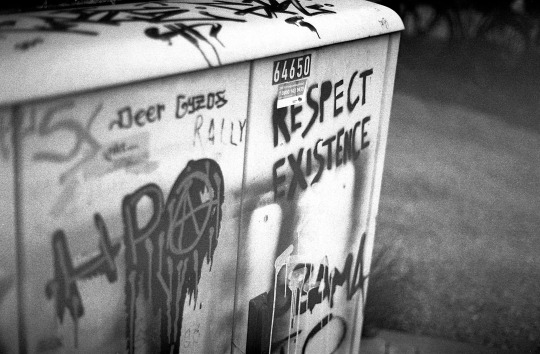
#film photography#analog#35mm film#35mm#black and white#ORWO Np 100#Minolta 7000 AF#Minolta AF 50mm f1.7#graffiti#graffittiart#street art
6 notes
·
View notes
Text
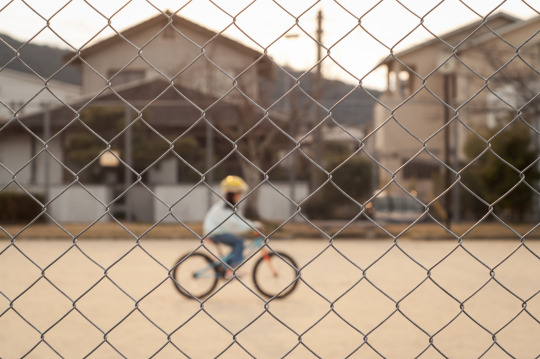
KonicaMinolta a7digital & minolta AF 50mm F1.7
ついに補助輪なしで乗れるようになれました。
自転車が楽しくて仕方ないらしく、
ここのところ毎日学校から帰ったら公園に
練習しに行ってますw
.
3/12の朝に台湾に向けて発送したGR10が
昨日、無事到着したらしい。
福岡→台湾で1週間弱なんだね。
次の出張前に帰って来てくれたらうれしいけど、
流石にそれは難しいかな。
10 notes
·
View notes
Link
Check out this listing I just added to my Poshmark closet: Minolta Maxxum 7000 35mm AF SLR w/ 50mm F1.7 Lens, Works With Case.
0 notes
Video
Guardian by Sorin Mutu
12 notes
·
View notes
Photo

New film camera - a Minolta Maxxum 5. It is so light and small... but also packed with so many features and functions. Can't wait to see what I get into with this little baby. I also got a 50mm/f1.7 prime AF lens to go with it, which is now officially my fastest lens. AF is new to me outside of basic point and shoots. We'll see how I adapt to it. I'm gonna shoot my first roll in full auto mode to see how it does.
2 notes
·
View notes
Photo

%^ Minolta Maxxum AF 50mm F1.7 AF Lens https://ift.tt/39so1Jq
0 notes
Photo

Exploring the alleys of Capestrano by night #2 by Mario Ottaviani Photography Sony a450 + Minolta AF 50mm f1.7 https://flic.kr/p/2cTrqP6
0 notes
Photo




PHOT102 - Small Worlds & City Limits - Final Selection
The time has come to select the final images for this project. To be honest, I don’t think it was as hard as I thought. I wanted to pick one from each contact sheet (not including the test shoot or barbican images). This would leave me with three A3 prints as originally planned. I shall explain my decision for these final images in chronological order.
The first major shoot was shot with my Zeiss Nettar 518/16 with a roll of Fomapan 100. This was actually the hardest roll to choose from as I felt that the majority of the roll was worthy of being printed in my opinion. This could be down to the fact it was a new camera (to me), a kind of new film and a new format to shoot in; so I felt that it was a breath of fresh air when it came to creating images. Like I said, I could of picked anything from this roll as I was impressed with the films qualities as well as the Zeiss’ optical performance, even with it’s dated nuances. I chose the shot of the Civic Centre because of it’s imposing posture on the image; it towers over anybody below it and looks down in disarray in it’s solemn state. The building was once a hive of activity for the council, a small world of workers and people working together. But now, it lies in disrepair waiting for a future unknown. *I should note, that even it was taken with a 6x6 camera, I have cropped the image to fit the 3:2 aspect ratio of the other 135 format images. Although I don’t condone cropping ones images, I had no choice.*
The second shoot was using my Canon EOS 100 Elan with my 50mm F1.8 STM. This was a replacement shoot for the prior roll of Delta 100 that went wrong due to my temper raging at the abysmal 120 film loading. This is the main part that puts me off of using medium format B&W. I love the quality that 120 gives, but I hate loading it for processing. For this, I used a 135 format Ilford Delta 400. While I wasn’t all that impressed with the film (this may be down to the Rodinal favouring lower speed films), I do like the images that came out of it. If these were taken on a fine grained film, I would of liked them even more. This was at a stage when I was still figuring out how I was composing my images, but defiantly improved over the earlier iterations. I chose the first frame of the Mary Newman building purely on the aesthetic qualities of the photograph. I really enjoyed the harsh brutalist lines, and it was exactly what I was looking for. The geometric shapes and symmetrical design is often thought of dystopian in my view. I also like the fact that you could move that building to the USSR and it wouldn’t look out of place. Again, the building is a small world of students. It’s primarily halls of residence; a place where students live and breathe in their own little world. I also feel that the university campus is a small world in it’s self.
The last shoot was perhaps the most annoying (apart from ruining a roll due to a rage). The first 16 images were pre-exposed by a younger me, unknowingly sabotaging my own film. But, this was OK as the final part of the roll for me was fantastic. This is where I had really nailed down my compositions and what I wanted from the images. This was taken in the Courtenay Street car park. This was looking toward the back of WHSmith. As soon as I saw the image in the view finder of my Minolta 9000 with the 50mm focal length: it was perfect. Everything was in it’s right place, I stopped down to F11 to get more in the frame, adjusted the shutter speed accordingly and pressed the shutter button. I think Ilford Pan 100 really worked in the images favour. The fine grain complements the harsh and contrasting lighting. I also think that the 50mm F1.7 was the right choice, because it’s damn sharp and it’s the only Minolta AF lens I own. I can only imagine how the first 16 images would of turned out if I hadn’t exposed the roll before hand. I had the same feeling with earlier images where the jigsaw pieces fell into place; but obviously they weren’t meant to be.
0 notes
Text
Throwback Thursday: Our first cameras
What was your first camera?
For this week's Throwback Thursday, I asked fellow DPReview staffers to write a few paragraphs about their first cameras, film and digital. I'll go first.
Jeff Keller
Unlike most of my colleagues, I wasn't a huge film photographer. I recall owning one of those flat 110 cameras, followed by a standard-issue clamshell compact, which was promptly stolen by someone in the baggage department at London's Heathrow airport. I ended up running to Harrods to pick up something similar. I probably paid way too much.
I was lucky enough to get my hands on digital cameras really early – like 1996 early. After toying around with early Kodak, Casio and Apple cameras, I finally bit the bullet and dropped $900 on the Olympus D-300L, also known as the Camedia C-800L. This powerhouse had an F2.8, 36mm-equivalent lens and a sensor with XGA resolution.
My real pride and joy was the Olympus D-600L (Camedia C-1400L), which cost me $1300 in 1997. It had an unusual design, large-ish 2/3" 1.4MP sensor, and a 36-110mm equivalent F2.8-3.9 lens. Its optical viewfinder had 95% coverage and was supplemented by a 1.8" LCD. I don't know what I did with it, but I wish I still had the D-600L in my possession!
Olympus C-800L photo by Erkaha
Allison Johnson
I’m counting my first camera as one that I used early on, and am now entrusted with, but isn’t strictly mine. I had some kind of point-and-shoot film camera of my own when I was young, and shared a Game Boy Camera with my sister, but Dad’s Nikkormat FT3 was the first 'real camera' I shot with. Let me tell you, that camera is built for the ages. It’s heavy and indestructible and as far as I can tell, still works like the day it was born. I take it out with me nowadays when I know I’ll be able to slow down and think about what I’m doing, and when I know I won’t be devastated if I screw it all up and come back with nothing. I haven’t been disappointed yet.
The very first digital camera I bought is slightly embarrassing: a Sony Cyber-shot DSC-T700. It was one of the super-slim Cyber-shots of the late 2000s that was all touchscreen. What can I say? I was taken in by its sleek looks and pocketability. It started up when you slid the front panel down to reveal the lens, and there was a real risk of the whole camera flying out of your hands every time you did that. It also had the world’s tiniest zoom lever in one corner on the top, which was pretty annoying to operate. The photos were fine in daylight, though I was just taking casual snapshots and didn’t exactly stress test it. I can confidently say my smartphone now does a fine job of everything that I was using this camera for. Therein lies the whole compact camera market, I guess.
Nikkormat FT3 photo by BastienM
Barney Britton
My first camera was a Pentax MX, inherited from my Dad (who is still very much alive), along with a 50mm F1.7 prime and a couple of Tamron Adaptall-2 zooms. It was the camera I learned photography with, and the only camera I took on a round-Europe rail trip when I was 18. I sold it when I went to university to fund a Canon EOS-3, and always regretted it. I found an MX in a junk shop last year, and I’m not going to sell this one.
My first digital camera was the Canon EOS 10D. I saved up for an entire year, working in a hotel restaurant during university holidays to pay for it (a story told in part, here) and it was my main camera for a couple of years.
The EOS 10D was the first ‘affordable’ DSLR that really stacked up against high-end film models in terms of build quality and functionality. Although its AF system was primitive compared to the EOS 3, it was extremely well-built, and very reliable. At the time, the 10D also offered the best image quality of any enthusiast DSLR (and arguably, the best image quality of any DSLR, period). Noise levels were low across its standard ISO range, and an extension setting of ISO 3200 offered filmlike grain, which looked great in black and white. I still see 10Ds 'in the wild' occasionally, and for a long time, we used an EOS 10D as our main studio camera at DPReview.
The EOS 10D had a magnesium-alloy body.
I shot my first published work on the EOS 10D, which felt like quite an achievement given how poorly its autofocus system performed in low light. If I’d never become a professional performance photographer, I might still have it. After the 10D I upgraded to an EOS-1D Mark II, when I started getting more serious about theatre and music photography.
Pentax MX photo by Alf Sigaro
Dale Baskin
I truly have no idea what my first camera was. When I go back and look at old family photos, even ones in which I’m barely a toddler, I always seem to have a camera in my hands, running the gamut from my Dad’s rangefinder to a free plastic camera someone chose over a toaster when opening a bank account. When I got serious about learning photography, however, there was one camera that appealed to me like no other: the Miranda Sensorex.
Why? Probably for the same reasons a lot of people started photography with a particular camera: it was available to me. I didn’t care that the camera was older than I was and heavier than a rock. It looked the way a camera was supposed to look, and it had the latest in sensor technology. (For the youngsters out there, this technology was called ‘film’, and my Dad insisted on the Kodachrome or Ektachrome varieties).
It was a great camera to learn on as there was no auto, no program and no aperture priority mode to fall back on. I recall reading somewhere that the Sensorex was the first 35mm SLR with TTL metering, and to this day I love the match-needle method of setting exposure. It may be a dinosaur by today’s standards, but it still works and will probably continue to do so for decades.
My first digital camera was the Canon PowerShot S300, a 2.1MP point and shoot. (Back then, that extra 0.1MP was important!). I agonized for weeks over whether or not I should spend literally hundreds of dollars more to get a 3MP camera, but in the end couldn’t justify the spend. I immediately fell in love with digital photography, especially the the ability for easy sharing on social networks. (Social network being defined as someone in your personal social network to whom you could snail-mail a CD-ROM of photos they were never going to look at anyway.)
As fun as digital was, it still didn’t give me the same quality as scanned slides, so I stuck with film for a few more years until the Canon EOS 20D came out, and the rest is history.
Carey Rose
The first camera I have any sort of memory of actually using (besides disposable cameras and my Grandpa's Canon EOS 650 film camera, which was so cool) was a PowerShot A75. It was a hand-me-down from my dad, and the perfect 'first digital camera' for a socially awkward high-schooler. It was fairly small (though that didn’t stop me from wanting a camera phone as soon as such things became practical and available), ran on easy-to-find AA batteries, and the photo quality was great for the time.
It was also called 'PowerShot,' a brand name that, to this day, sounds way cooler than competing models like such as FinePix, Easyshare and Coolpix, all of which should have died out along with animated backgrounds and auto-play music on your favorite Geocities ‘links’ page. It even survived a tumble onto concrete for a while, though eventually it succumbed to the dreaded ‘lens error’ where the lens wouldn’t properly extend or contract.
It was superseded by a Samsung NV10, a camera which looked cooler, was a lot smaller and had a lot more megapixels (plus a funky Smart Touch control system with soft keys surrounding two sides of the display,) but I ended up preferring the overall ‘look’ of the PowerShot images I used to get. So when I left the NV10 on a train while traveling across Europe, I replaced it with another PowerShot, the S3 IS, and never looked back.
Sam Spencer
The first camera I used was probably the same as anyone born before 1990-something: a disposable point and shoot. Being six years old, I had no idea about focus, flash, or anything of the sort and tried to take a macro picture of a spider at less than six inches away….
A couple years later my father proudly came home one evening with a Ricoh RDC-2. I wasn’t allowed to get my prepubescent mitts on it until later when computer monitors grew to 1,024 pixels on the long side, making the VGA Ricoh obsolete. I remember using the AC adaptor for it almost exclusively since it ate through AA’s almost as often as its now-diminutive memory filled. I also seem to remember using its OVF more often than the (optional) flip-up screen on top. I mostly used it to try and capture various members of my remote control car collection airborne after launching off jumps I made out of tape and cardboard. Remember, I was about 8 or 9.
The Sony Cyber-shot DSC-S75 had a 3MP CCD, 34-102mm equiv. lens, a rear LCD info display and plenty of manual controls. Its lens, labeled 'Carl Zeiss,' could be found on numerous other cameras under different names (e.g. Canon, Epson).
That camera was replaced with a Sony Cyber-shot DSC-S75, which was the first time I had ever seen or heard the name ‘Zeiss’. That camera offered a bit more manual control (like focus!) than the Ricoh, was what got me truly enthusiastic about photography in Junior High, leading to signing up for darkroom photography my freshman year. Then I was handed a ‘real’ camera, a Minolta SRT200, which worked well until Nikon released the D50, a DSLR affordable enough to convince my generous father to help me purchase (he definitely paid for the majority).
Simon Joinson
The Fujica ST605N was an M42 screw-mount SLR made in the 70's and 80's. Photo by Alf Sigaro.
I have my father to blame for my lifelong love affair with photography. Not because he was a particularly accomplished or prolific photographer (based on the wallets of photos I have from my childhood I’d characterize his technique as a bit hit and miss, with a lot more ‘miss’ than ‘hit’), but because he gave me my first camera at age 12 or 13. I got this hand-me-down because he was replacing his camera – a Fujica ST 605N – with something a lot fancier (a Minolta X500, chosen after an excruciating amount of research including, much to my mother’s consternation, two visits to a camera show from which he returned with a roll full of pictures of semi-naked models on motorbikes).
Anyway, I didn’t care because I now had my own real camera, complete with 35mm, 55mm and 135mm lenses packed into an ancient gadget bag that released a heady aroma of moldy old leather and film every time I creaked open its lid, and whose numerous pockets were home to a fascinating collection of dusty accessories and starburst filters. It was the most amazing thing I had ever owned.
The Fujica ST605N was one of dozens of similar no-frills M42 screw mount SLRs made during the 70s and early 80s (although it appears that the mere fact you could see the currently selected shutter speed in the viewfinder was quite the selling point in 1978), but it was compact, nicely made and had a decent focus screen and a fast (at the time) silicon exposure meter.
And I loved it. And, like all photographers who started with a fully manual camera and a small selection of prime lenses that took about 10 minutes to change (thanks to the screw mount), I quickly learned the basics of photography (specifically apertures and shutter speeds), partly by reading but mostly through trial and error.
I can still remember the first roll of I put through it, at the local zoo, and the thrill of getting the prints back only 5 days and 2 weeks' worth of allowance later (on this point my father made it clear I would need to reign in my enthusiasm and that a 36-exposure roll normally lasted him for at least a few months).
After many years of enjoying his Fujica, Simon moved on to the Nikon F-301, known as the N2000 in the United States. Photo by John Nuttall.
I kept - and used - the Fujica all my teen years, adding an old flashgun that took 5 minutes of high-pitched wheezing to charge up, a slightly moldy 70-200mm Vivitar zoom I found in a junk shop, and a sizeable collection of blower brushes and cap-keepers that came free on the covers of photography magazines. My time with her only ended when I went to college – all students were required to arrive on the first day with a Nikon SLR, so I had to trade-in my trusty old ST605N for a Nikon F301 (aka N2000), which seemed like something out of Knight Rider by comparison. But that’s another story…
The Casio QV-10, with its low resolution CCD and rotating lens, was one of the world's first consumer digital cameras.
My first digital camera? Well, the first I used was a Casio QV10, but since I started writing about digital cameras in 1995, I never really had to buy one (we had a house full of them), and I just borrowed what I wanted when I wasn’t shooting for work. I’m slightly embarrassed to admit that I didn’t actually buy a digital camera for myself until 2011 (funnily enough it too was a Fuji – a first generation X100).
So what was your first camera (film or digital – both are fair game)? Let us know in the comments below! Suggestions for future Throwback Thursday articles are also welcome.
from DIYS http://ift.tt/2m3TR9N
0 notes
Text
Vehicles - #10 Take me Home
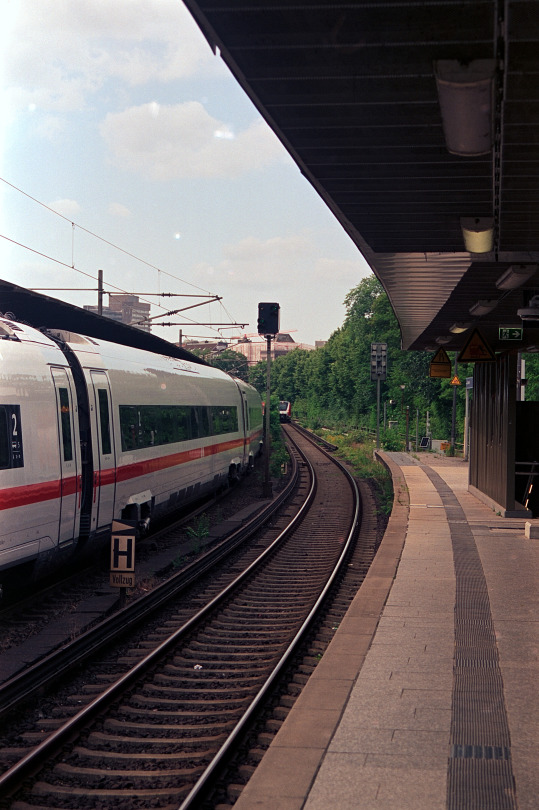
#film photography#analog#35mm film#35mm#color negative film#cinefilm#kodak vision3 250d#Minolta Dynax 7xi#Minolta AF 50mm f1.7#trains#public transport
5 notes
·
View notes
Text
五糎道場
PYにこんなコラムを見つけた。
糎は「センチ」と読むらしい。
カメラが今よりずっと高級品だった時代には、どこの家のお父さんも、家族のスナップ、風景写真、旅行の記録、とにかくすべての写真を50mmレンズ一本で撮っていたのです。
なるほどね。
今はカメラを買ったら大体28-70mmくらいの
「標準レンズ」が付いてくるけど、
昔は50mmの単焦点が「標準レンズ」だったらしい。
もしかしたら50mmがこの世で一番「日常」を
写してきたレンズかもしれんね。
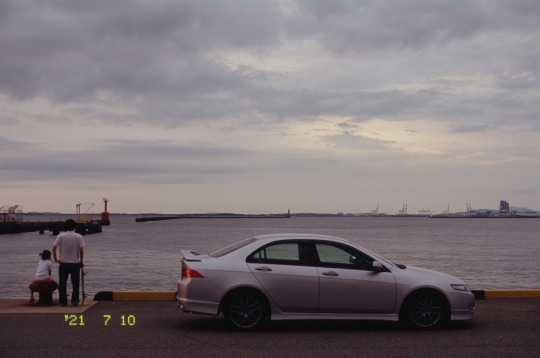
MINOLTA α-7 & MINOLTA AF 50mm F1.7
引いて広角レンズのように撮るもよし。
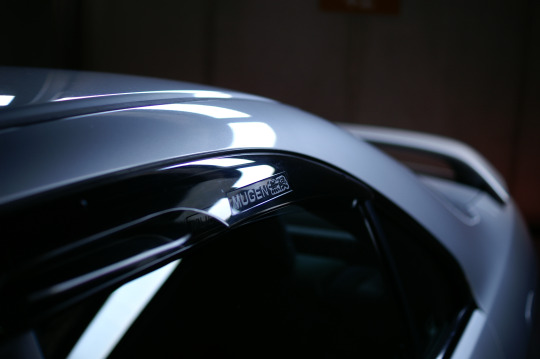
KONICA MINOLTA α-7digital & SONY DT 35mm F1.8
近寄ってディテールを強調するもよし。
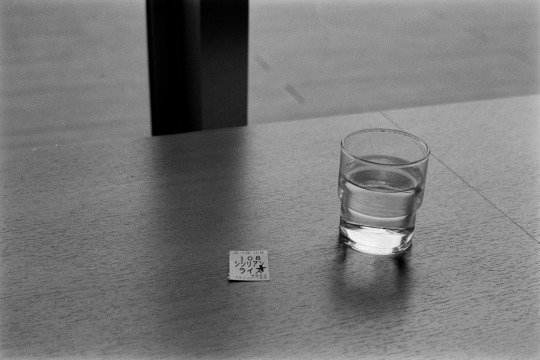
CONTAX RX & Carl Zeiss Tessar 45mm F2.8
テーブルフォトにもちょうどいい。

SONY α7Ⅲ & Zeiss loxia 2/50
兎に角万能で使いやすい。
このブログ書きながら思ったけど、
50mmのレンズ何本持ってるんや…
ちょっと…断捨離しよ。
7 notes
·
View notes
Text
Throwback Thursday: Our first cameras
What was your first camera?
For this week's Throwback Thursday, I asked fellow DPReview staffers to write a few paragraphs about their first cameras, film and digital. I'll go first.
Jeff Keller
Unlike most of my colleagues, I wasn't a huge film photographer. I recall owning one of those flat 110 cameras, followed by a standard-issue clamshell compact, which was promptly stolen by someone in the baggage department at London's Heathrow airport. I ended up running to Harrods to pick up something similar. I probably paid way too much.
I was lucky enough to get my hands on digital cameras really early – like 1996 early. After toying around with early Kodak, Casio and Apple cameras, I finally bit the bullet and dropped $900 on the Olympus D-300L, also known as the Camedia C-800L. This powerhouse had an F2.8, 36mm-equivalent lens and a sensor with XGA resolution.
My real pride and joy was the Olympus D-600L (Camedia C-1400L), which cost me $1300 in 1997. It had an unusual design, large-ish 2/3" 1.4MP sensor, and a 36-110mm equivalent F2.8-3.9 lens. Its optical viewfinder had 95% coverage and was supplemented by a 1.8" LCD. I don't know what I did with it, but I wish I still had the D-600L in my possession!
Olympus C-800L photo by Erkaha
Allison Johnson
I’m counting my first camera as one that I used early on, and am now entrusted with, but isn’t strictly mine. I had some kind of point-and-shoot film camera of my own when I was young, and shared a Game Boy Camera with my sister, but Dad’s Nikkormat FT3 was the first 'real camera' I shot with. Let me tell you, that camera is built for the ages. It’s heavy and indestructible and as far as I can tell, still works like the day it was born. I take it out with me nowadays when I know I’ll be able to slow down and think about what I’m doing, and when I know I won’t be devastated if I screw it all up and come back with nothing. I haven’t been disappointed yet.
The very first digital camera I bought is slightly embarrassing: a Sony Cyber-shot DSC-T700. It was one of the super-slim Cyber-shots of the late 2000s that was all touchscreen. What can I say? I was taken in by its sleek looks and pocketability. It started up when you slid the front panel down to reveal the lens, and there was a real risk of the whole camera flying out of your hands every time you did that. It also had the world’s tiniest zoom lever in one corner on the top, which was pretty annoying to operate. The photos were fine in daylight, though I was just taking casual snapshots and didn’t exactly stress test it. I can confidently say my smartphone now does a fine job of everything that I was using this camera for. Therein lies the whole compact camera market, I guess.
Nikkormat FT3 photo by BastienM
Barney Britton
My first camera was a Pentax MX, inherited from my Dad (who is still very much alive), along with a 50mm F1.7 prime and a couple of Tamron Adaptall-2 zooms. It was the camera I learned photography with, and the only camera I took on a round-Europe rail trip when I was 18. I sold it when I went to university to fund a Canon EOS-3, and always regretted it. I found an MX in a junk shop last year, and I’m not going to sell this one.
My first digital camera was the Canon EOS 10D. I saved up for an entire year, working in a hotel restaurant during university holidays to pay for it (a story told in part, here) and it was my main camera for a couple of years.
The EOS 10D was the first ‘affordable’ DSLR that really stacked up against high-end film models in terms of build quality and functionality. Although its AF system was primitive compared to the EOS 3, it was extremely well-built, and very reliable. At the time, the 10D also offered the best image quality of any enthusiast DSLR (and arguably, the best image quality of any DSLR, period). Noise levels were low across its standard ISO range, and an extension setting of ISO 3200 offered filmlike grain, which looked great in black and white. I still see 10Ds 'in the wild' occasionally, and for a long time, we used an EOS 10D as our main studio camera at DPReview.
The EOS 10D had a magnesium-alloy body.
I shot my first published work on the EOS 10D, which felt like quite an achievement given how poorly its autofocus system performed in low light. If I’d never become a professional performance photographer, I might still have it. After the 10D I upgraded to an EOS-1D Mark II, when I started getting more serious about theatre and music photography.
Pentax MX photo by Alf Sigaro
Dale Baskin
I truly have no idea what my first camera was. When I go back and look at old family photos, even ones in which I’m barely a toddler, I always seem to have a camera in my hands, running the gamut from my Dad’s rangefinder to a free plastic camera someone chose over a toaster when opening a bank account. When I got serious about learning photography, however, there was one camera that appealed to me like no other: the Miranda Sensorex.
Why? Probably for the same reasons a lot of people started photography with a particular camera: it was available to me. I didn’t care that the camera was older than I was and heavier than a rock. It looked the way a camera was supposed to look, and it had the latest in sensor technology. (For the youngsters out there, this technology was called ‘film’, and my Dad insisted on the Kodachrome or Ektachrome varieties).
It was a great camera to learn on as there was no auto, no program and no aperture priority mode to fall back on. I recall reading somewhere that the Sensorex was the first 35mm SLR with TTL metering, and to this day I love the match-needle method of setting exposure. It may be a dinosaur by today’s standards, but it still works and will probably continue to do so for decades.
My first digital camera was the Canon PowerShot S300, a 2.1MP point and shoot. (Back then, that extra 0.1MP was important!). I agonized for weeks over whether or not I should spend literally hundreds of dollars more to get a 3MP camera, but in the end couldn’t justify the spend. I immediately fell in love with digital photography, especially the the ability for easy sharing on social networks. (Social network being defined as someone in your personal social network to whom you could snail-mail a CD-ROM of photos they were never going to look at anyway.)
As fun as digital was, it still didn’t give me the same quality as scanned slides, so I stuck with film for a few more years until the Canon EOS 20D came out, and the rest is history.
Carey Rose
The first camera I have any sort of memory of actually using (besides disposable cameras and my Grandpa's Canon EOS 650 film camera, which was so cool) was a PowerShot A75. It was a hand-me-down from my dad, and the perfect 'first digital camera' for a socially awkward high-schooler. It was fairly small (though that didn’t stop me from wanting a camera phone as soon as such things became practical and available), ran on easy-to-find AA batteries, and the photo quality was great for the time.
It was also called 'PowerShot,' a brand name that, to this day, sounds way cooler than competing models like such as FinePix, Easyshare and Coolpix, all of which should have died out along with animated backgrounds and auto-play music on your favorite Geocities ‘links’ page. It even survived a tumble onto concrete for a while, though eventually it succumbed to the dreaded ‘lens error’ where the lens wouldn’t properly extend or contract.
It was superseded by a Samsung NV10, a camera which looked cooler, was a lot smaller and had a lot more megapixels (plus a funky Smart Touch control system with soft keys surrounding two sides of the display,) but I ended up preferring the overall ‘look’ of the PowerShot images I used to get. So when I left the NV10 on a train while traveling across Europe, I replaced it with another PowerShot, the S3 IS, and never looked back.
Sam Spencer
The first camera I used was probably the same as anyone born before 1990-something: a disposable point and shoot. Being six years old, I had no idea about focus, flash, or anything of the sort and tried to take a macro picture of a spider at less than six inches away….
A couple years later my father proudly came home one evening with a Ricoh RDC-2. I wasn’t allowed to get my prepubescent mitts on it until later when computer monitors grew to 1,024 pixels on the long side, making the VGA Ricoh obsolete. I remember using the AC adaptor for it almost exclusively since it ate through AA’s almost as often as its now-diminutive memory filled. I also seem to remember using its OVF more often than the (optional) flip-up screen on top. I mostly used it to try and capture various members of my remote control car collection airborne after launching off jumps I made out of tape and cardboard. Remember, I was about 8 or 9.
The Sony Cyber-shot DSC-S75 had a 3MP CCD, 34-102mm equiv. lens, a rear LCD info display and plenty of manual controls. Its lens, labeled 'Carl Zeiss,' could be found on numerous other cameras under different names (e.g. Canon, Epson).
That camera was replaced with a Sony Cyber-shot DSC-S75, which was the first time I had ever seen or heard the name ‘Zeiss’. That camera offered a bit more manual control (like focus!) than the Ricoh, was what got me truly enthusiastic about photography in Junior High, leading to signing up for darkroom photography my freshman year. Then I was handed a ‘real’ camera, a Minolta SRT200, which worked well until Nikon released the D50, a DSLR affordable enough to convince my generous father to help me purchase (he definitely paid for the majority).
Simon Joinson
The Fujica ST605N was an M42 screw-mount SLR made in the 70's and 80's. Photo by Alf Sigaro.
I have my father to blame for my lifelong love affair with photography. Not because he was a particularly accomplished or prolific photographer (based on the wallets of photos I have from my childhood I’d characterize his technique as a bit hit and miss, with a lot more ‘miss’ than ‘hit’), but because he gave me my first camera at age 12 or 13. I got this hand-me-down because he was replacing his camera – a Fujica ST 605N – with something a lot fancier (a Minolta X500, chosen after an excruciating amount of research including, much to my mother’s consternation, two visits to a camera show from which he returned with a roll full of pictures of semi-naked models on motorbikes).
Anyway, I didn’t care because I now had my own real camera, complete with 35mm, 55mm and 135mm lenses packed into an ancient gadget bag that released a heady aroma of moldy old leather and film every time I creaked open its lid, and whose numerous pockets were home to a fascinating collection of dusty accessories and starburst filters. It was the most amazing thing I had ever owned.
The Fujica ST605N was one of dozens of similar no-frills M42 screw mount SLRs made during the 70s and early 80s (although it appears that the mere fact you could see the currently selected shutter speed in the viewfinder was quite the selling point in 1978), but it was compact, nicely made and had a decent focus screen and a fast (at the time) silicon exposure meter.
And I loved it. And, like all photographers who started with a fully manual camera and a small selection of prime lenses that took about 10 minutes to change (thanks to the screw mount), I quickly learned the basics of photography (specifically apertures and shutter speeds), partly by reading but mostly through trial and error.
I can still remember the first roll of I put through it, at the local zoo, and the thrill of getting the prints back only 5 days and 2 weeks' worth of allowance later (on this point my father made it clear I would need to reign in my enthusiasm and that a 36-exposure roll normally lasted him for at least a few months).
After many years of enjoying his Fujica, Simon moved on to the Nikon F-301, known as the N2000 in the United States. Photo by John Nuttall.
I kept - and used - the Fujica all my teen years, adding an old flashgun that took 5 minutes of high-pitched wheezing to charge up, a slightly moldy 70-200mm Vivitar zoom I found in a junk shop, and a sizeable collection of blower brushes and cap-keepers that came free on the covers of photography magazines. My time with her only ended when I went to college – all students were required to arrive on the first day with a Nikon SLR, so I had to trade-in my trusty old ST605N for a Nikon F301 (aka N2000), which seemed like something out of Knight Rider by comparison. But that’s another story…
The Casio QV-10, with its low resolution CCD and rotating lens, was one of the world's first consumer digital cameras.
My first digital camera? Well, the first I used was a Casio QV10, but since I started writing about digital cameras in 1995, I never really had to buy one (we had a house full of them), and I just borrowed what I wanted when I wasn’t shooting for work. I’m slightly embarrassed to admit that I didn’t actually buy a digital camera for myself until 2011 (funnily enough it too was a Fuji – a first generation X100).
So what was your first camera (film or digital – both are fair game)? Let us know in the comments below! Suggestions for future Throwback Thursday articles are also welcome.
from DIYS http://ift.tt/2m3TR9N
0 notes
Photo

%^ Minolta AF Maxxum 50mm f1.7 Lens 50/1.7 Sony #550 https://ift.tt/2CFwyME
0 notes
Text
Photographing Photography - #31 Giving Something Broken a New Life

#film photography#analog#35mm film#35mm#Minolta Dynax 7xi#color negative film#kodak gold 200#Minolta AF 50mm f1.7
12 notes
·
View notes
Text
Architecture - #26 Solitude

#film photography#analog#35mm film#35mm#color negative film#Paradies 400#expired film#Minolta 7000 AF#Minolta AF 50mm f1.7
3 notes
·
View notes
Text
Photographing Photography - #9 Rough Around the Edges

#film photography#analog#35mm film#35mm#black and white#ilford delta 3200#Minolta Dynax 7xi#Minolta AF 50mm f1.7
3 notes
·
View notes